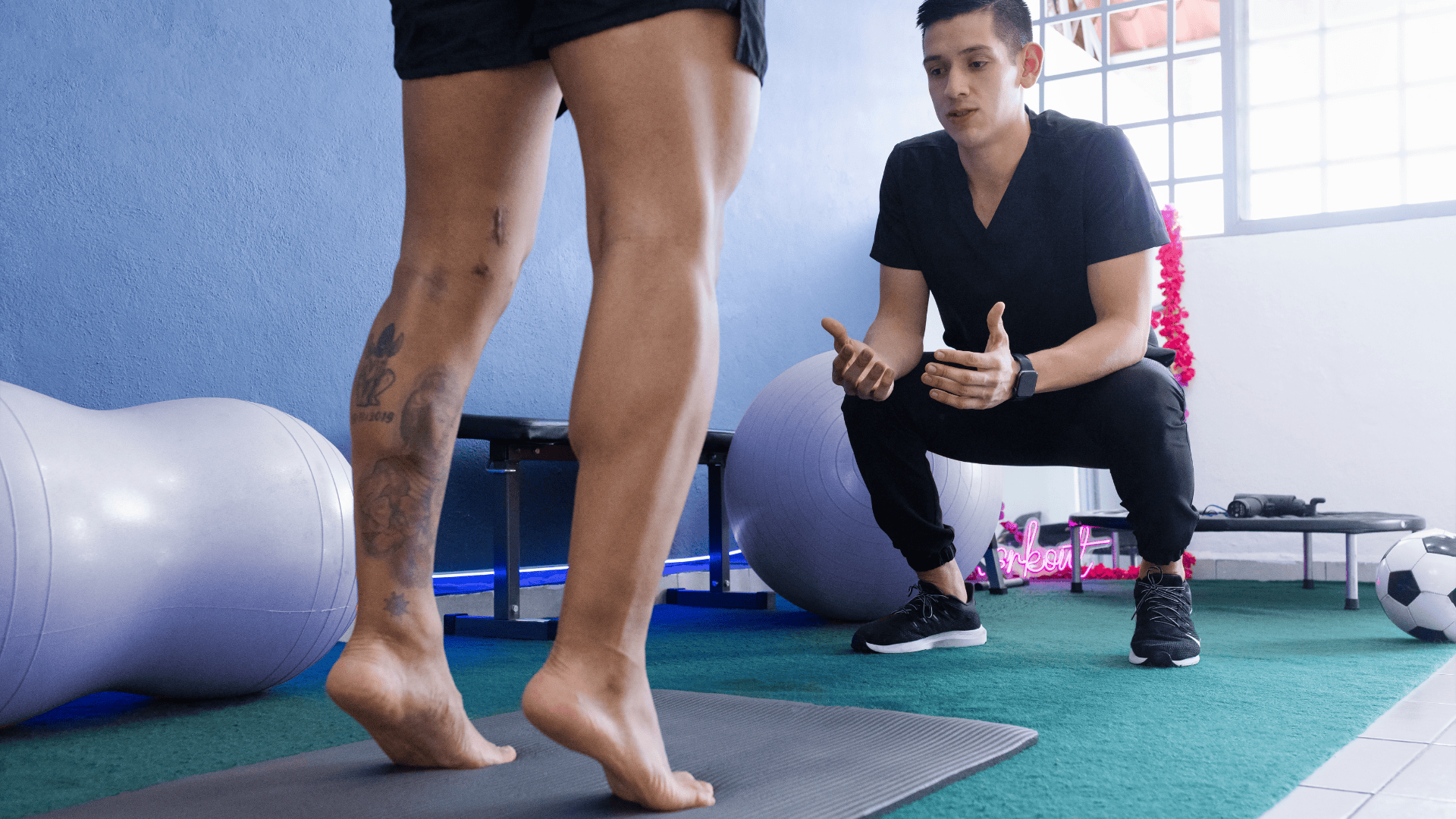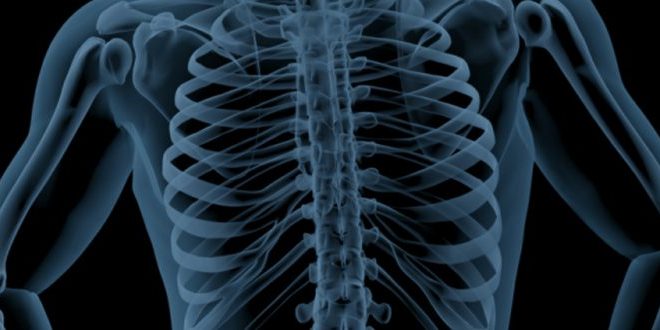Benefits of Myofascial Therapy in Athletic Recovery
Myofascial therapy releases tight connective tissue that builds up from intense or repetitive athletic activity. By breaking down adhesions and restoring fascia glide, it accelerates healing, reduces pain, and improves range of motion. Enhanced circulation and nerve function support faster recovery and lower injury risk. Ultimately, athletes gain smoother, more efficient movement and greater performance longevity.

Athletic recovery isn’t just about taking a day off or drinking a post-workout shake—it’s a critical part of any performance strategy. Recovery is when the body rebuilds, repairs, and adapts to the stress placed on it during training. Without it, progress stalls, injuries creep in, and longevity in the sport becomes compromised. For athletes, whether recreational or professional, recovery isn’t optional—it’s essential.
One key area that often gets overlooked in the recovery process is the health of the fascia. Fascia is the dense connective tissue that surrounds muscles, bones, and joints. It plays a vital role in coordinating movement, distributing tension, and supporting proper muscle function. When fascia becomes restricted—due to overuse, trauma, poor posture, or repetitive motion—it limits mobility, creates compensation patterns, and can set the stage for chronic pain and repeated injury.
This is where myofascial therapy comes in. Myofascial therapy focuses specifically on releasing these fascial restrictions. Unlike general massage or static stretching, this therapy targets deep connective tissue layers using precise techniques designed to restore normal movement and reduce dysfunction. For athletes, this can be the difference between playing at 70% or truly performing at 100%.
Fascia: The Tissue Behind the Pain
Fascia is the body’s connective tissue network—a thin, flexible layer that wraps around muscles, nerves, joints, and organs. It acts as a structural support system that keeps everything in alignment and working together. More than just passive wrapping, fascia is highly innervated and plays a key role in proprioception, coordination, and the transmission of force throughout the body.
How Fascia Becomes Restricted
Fascia is designed to glide smoothly during movement. But over time, it can become tight, sticky, or rigid due to overuse, trauma, repetitive strain, or even poor posture. Whether it’s running on uneven terrain, sitting hunched at a desk, or compensating for an old injury, these repetitive stresses create tension in the fascial layers.
When fascia loses its flexibility, it begins to restrict the natural movement of muscles and joints. This can lead to the development of adhesions or trigger points—areas of high tension that limit motion and disrupt normal movement patterns.
The Impact of Fascial Dysfunction
Limited Mobility
Tight fascia can compress joints and limit the range of motion. This is often felt as stiffness or a feeling of being “stuck,” especially during athletic movement.
Muscle Imbalances
When fascia binds or restricts one area, other muscles are forced to compensate. Over time, this creates imbalances, reduces efficiency, and increases the risk of injury.
Pain and Poor Performance
Fascial restrictions can irritate nerves, disrupt normal biomechanics, and cause referred pain—pain that shows up in areas distant from the actual problem. These restrictions drain energy, reduce force output, and interfere with performance goals.
Athletic Stress and Fascial Overload
Athletes put their bodies through demanding physical challenges on a regular basis. Whether it’s running, lifting, jumping, or changing direction, these high-performance movements rely heavily on the coordination and elasticity of the fascial system. While the body is built to adapt, repeated stress without proper recovery can overwhelm the fascia and lead to dysfunction.
How Athletic Activity Contributes to Fascial Restrictions
High-Intensity Movement Patterns
Explosive movements like sprinting, powerlifting, and agility drills create repeated tension and compression through the fascia. Over time, this load causes the tissue to tighten and lose its ability to glide freely.
Unresolved Microtrauma
Small strains or impacts that go unnoticed or untreated can accumulate into bigger problems. These micro-injuries lead to inflammation, restricted tissue, and early development of adhesions in the fascia.
Scar Tissue from Previous Injuries
When an athlete recovers from a strain, sprain, or surgical procedure, scar tissue often forms in and around the fascial planes. Without targeted therapy, this scar tissue can cause lasting stiffness and limit proper muscle function.
Common Symptoms in Athletes Linked to Fascia Issues
Tight Hamstrings
Even with regular stretching, tight hamstrings often persist due to fascial restrictions along the back line of the body. Fascia doesn’t respond well to passive stretching alone—targeted release is often required.
Shoulder Pain
Rotational sports like tennis, baseball, and swimming can build up dense fascial tension in the shoulder girdle, leading to impingement and decreased range of motion.
Chronic Tension
Fascia stores repetitive stress. Athletes may feel constant tension in the hips, neck, or lower back—often unrelated to muscle strain but directly tied to bound-up connective tissue.
"Stuck" Movement
When fascia isn’t gliding, movement feels off. Athletes describe it as moving through molasses or not being able to “open up” their stride or swing fully. This disrupts performance and increases fatigue.
What Myofascial Therapy Is (And What It Isn’t)
Myofascial therapy is a precise, clinically guided treatment that targets restrictions in the fascia—the connective tissue that supports and organizes the muscles and joints. Unlike traditional massage or stretching routines, which often provide only temporary relief, myofascial therapy addresses the root cause of dysfunction by focusing on restoring mobility, balance, and proper tissue mechanics.
At Mountain Movement Chiropractic & Natural Health, myofascial therapy is more than a standalone treatment—it's an integral part of a customized recovery and performance plan. Here are the advanced methods used in our clinic:
Myofascial Release Therapy (MRT)
A hands-on technique that applies sustained pressure to tight or bound fascia. This method helps release restrictions and restore natural tissue mobility. It's especially effective for chronic tightness and movement limitations.
IASTM (Instrument-Assisted Soft Tissue Mobilization)
Specialized tools are used to detect and break up scar tissue and fascial adhesions. This technique speeds up healing by stimulating a localized inflammatory response that brings fresh blood flow to the area.
Trigger Point Therapy
Focused pressure is applied to specific “knots” or hyper-irritable points within muscles and fascia. Releasing these points reduces referred pain and improves muscle activation.
PNF Stretching (Proprioceptive Neuromuscular Facilitation)
An active form of stretching that combines muscle contraction and relaxation to improve flexibility and restore neuromuscular function. It helps retrain the nervous system while improving range of motion.
Percussion Therapy
High-frequency vibration is applied through a handheld device to stimulate muscle fibers and improve circulation. This method is great for prepping tissue before exercise or aiding recovery post-workout.
Trigenics
A neuro-muscular technique that combines resistance movement, neurological stimulation, and breathing to reset muscle function. It’s ideal for cases where pain or weakness is rooted in faulty brain-muscle communication.
The Athletic Recovery Benefits
Myofascial therapy plays a pivotal role in helping athletes recover smarter—not just faster. By targeting the soft tissue system at a foundational level, it delivers benefits that extend beyond pain relief and into true performance enhancement. Here’s how:
Accelerated Healing
Myofascial therapy improves local blood flow and nutrient delivery to overworked or injured areas. This increased circulation helps remove metabolic waste, reduces inflammation, and speeds up the tissue repair process. It also helps decrease post-workout soreness and stiffness, making recovery more efficient and consistent.
Injury Prevention
A major component of injury prevention is catching and correcting movement faults early. Myofascial therapy helps identify and release areas of restriction that lead to compensation patterns. By restoring balance and symmetry to movement before breakdown occurs, the body can move more efficiently under stress without creating new problems.
Improved Range of Motion
When fascia becomes tight or restricted, it limits joint mobility and full muscle engagement. Myofascial therapy releases these restrictions, allowing athletes to regain proper range of motion. This not only reduces the risk of strain but also unlocks strength potential by allowing muscles to fire through their full contractile range.
Pain Reduction
Pain often doesn’t originate where it’s felt—it travels through the fascia. Myofascial therapy addresses underlying adhesions and restrictions that irritate nerves, create tension, and cause referred pain. By resolving these root issues, the therapy provides long-term relief rather than masking symptoms.
Better Movement Efficiency
When muscles and fascia are functioning in sync, movement becomes smoother, stronger, and more energy-efficient. Myofascial therapy helps reestablish proper muscle firing patterns, improves coordination, and reduces unnecessary effort in athletic movement. This leads to improved performance with less fatigue.
Why Myofascial Therapy Should Be Part of Every Athlete’s Recovery Plan
Myofascial therapy is a critical, often missing, link in the recovery process. It targets the fascia—connective tissue that directly influences how the body moves, heals, and performs. When left unaddressed, fascial restrictions can hold athletes back, cause pain, and limit long-term potential.
Incorporating myofascial therapy into your recovery strategy helps you get to the root of movement dysfunction. It improves flexibility, reduces pain, prevents injuries, and enhances performance—all without relying on medication or repetitive symptom-based care.
Don’t wait until pain forces you to stop. Take a proactive approach to your recovery.
📅 Schedule your first myofascial therapy session today
📞 Call us at: (864) 448-2073
📍 Visit us at: 1901 Laurens Road, Suite E, Greenville, SC 29607
🌐 Learn more: https://mountainmovementcenter.com
📱 Follow us on Facebook: Mountain Movement Center
📺 Watch recovery insights on YouTube: @DrMichaelDay

We Treat the
Toughest Cases
We'd love to talk with you about yours. Ask us anything and we will get back to you with a detailed answer about your case.

.jpg)




